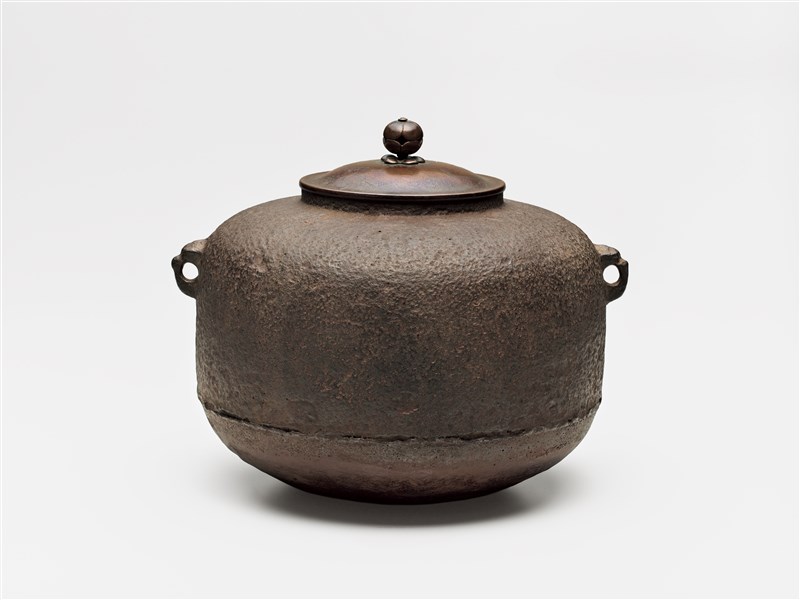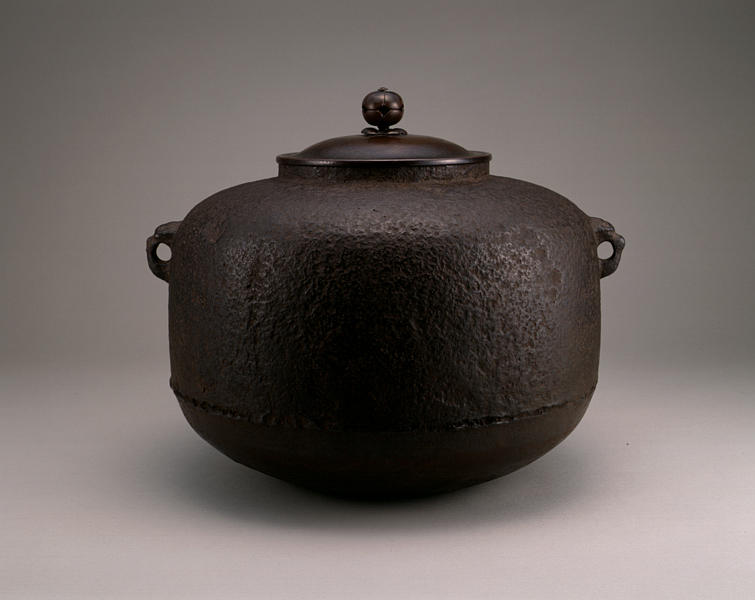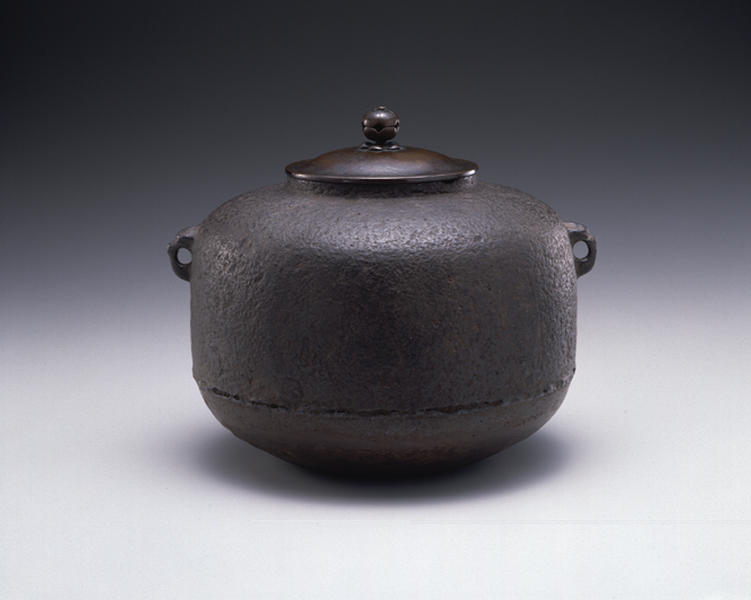Round Kettle, attributed to Tsuji Yojirō
- Momoyama period
- 16th to 17th century
- Cast iron
- H-20 D-26
Catalogue Entry
This kettle is thought to have been produced by Tsuji Yojiro, who was a disciple of Nishimura Donin. Yojiro was born in Omi Province (present-day Shiga Prefecture). He lived in Sanjo Kamanza, Kyoto, during the Momoyama period (1573-1615). During this time, he was the pre-eminent kettle producer in Japan. He reputedly produced the types of kettles known as amidado, unryu, and yoho with his disciples, Yashiro and Tozaemon. These styles were those favored by the tea master Sen no Rikyu. Tsuji was one of the largest producers of cast iron kettles in Japan at that time, and his kettles were exceptional in many ways. Much remains unknown about the producers of cast iron kettles who lived in the late 16th and early 17th centuries, including Tsuji Yojiro. Because no extant kettles which bear his inscriptions nor any packaging for kettles which would help identify the kettles has been found, it is generally thought that no kettle can be unequivocally proven to have been made by Tsuji Yojiro, although some works are attributed to him with a high degree of confidence. Tsuji is also said to have invented the metal casting technique of yakinuki. His characteristic style is the so-called haochi kettle, a type of kettle whose flange which protrudes like a skirt at the bottom of a kettle and helps prevent smoke from rising appears as if it were knocked off. This kettle is different in shape from the so-called marugama "round kettle" of the present day, and marugama in this case may simply refer to the haochi type of shinnari kettle.


